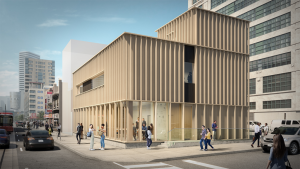VICTORIA — A new report by the Pacific Institute for Climate Solutions (PICS) concludes that local and regional governments have opportunities to build on pathways within their existing waste, equity and preservation policies to reduce embodied carbon in the built environment.
The report is titled Making Embodied Carbon Mainstream: A guide for local and regional governments to reduce embodied carbon in the built environment.
The report’s authors noted carbon emissions from extracting, manufacturing and transporting building materials are an untapped opportunity to address climate change, but many local governments feel doing so presents financial challenges.
“This guide proposes that governments can address the substance of embodied carbon without adopting a whole new suite of technical tools,” said PICS representatives in press release. “Instead it outlines potential approaches to reducing embodied carbon around existing policies.”
These policy areas include:
- Waste: Reinforcing the drive to zero waste, communities can prioritize green demolition, deconstruction and material salvage.
- Equity: Responding to the demand for housing equity, communities can support affordable housing retrofits and workforce development.
- Preservation: Deepening a longstanding pursuit of preservation, communities can extend commitments to building reuse and initiate low carbon retrofits.
“Making strong links to a larger urban agenda offers a way to forge buy-in from a wide range of stakeholders and to build coalitions with active interest groups,” said report author Hannah Teicher. “Local governments can use these efforts to enhance their profile as climate champions, demonstrating a commitment to emissions beyond their borders. And smaller, lower growth cities, so often on the periphery of community climate action, can play an active role, focusing on their existing building stock.”






Recent Comments
comments for this post are closed